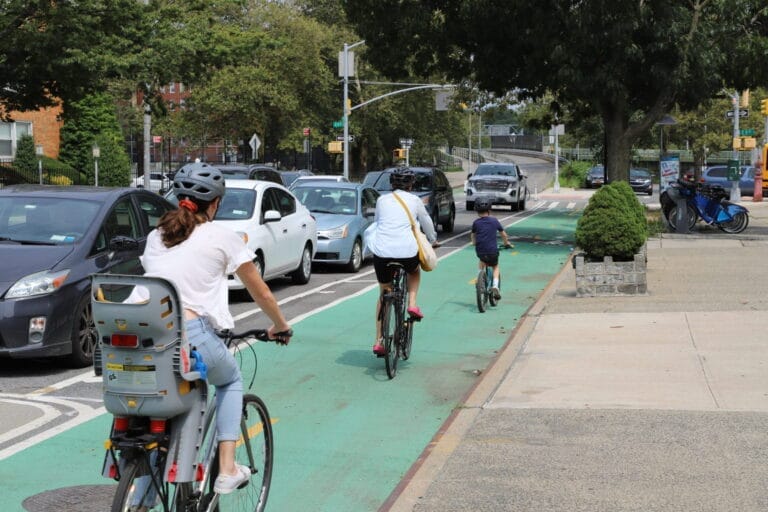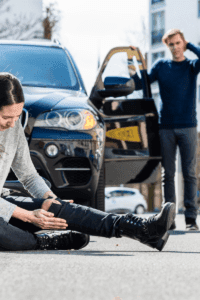Introduction:
Bicycling has become increasingly popular in the United Kingdom, with millions of people embracing it for leisure, fitness, and commuting. According to recent statistics from the UK’s Department for Transport, the number of cyclists has steadily risen, reflecting a growing trend towards active transportation.
alongside this surge in cycling participation comes the imperative for heightened bicycle safety awareness.
In 2020, the National Health Service (NHS) reported over 50,000 bicycle-related injuries in the UK, emphasising the importance of prioritising safety measures.
Despite the numerous benefits of cycling, including reduced carbon emissions and improved personal health, addressing the risks associated with this mode of transport is crucial.
As such, promoting bicycle safety practices and investing in infrastructure to support safer cycling experiences are essential priorities for communities across the UK.
This article delves into various aspects of bicycle safety, highlighting strategies to mitigate risks and enhance the overall cycling experience for individuals throughout the UK.
Understanding Common Bicycle Injuries and Risks
Among the array of injuries associated with cycling, bruises and minor cuts often top the list, closely followed by fractures, muscle strains, and sprains.
While these injuries are common, it’s important to note that more severe consequences, including fatalities, can also result from bicycle accidents.
According to (NSC)the National Safety Council, in 2020, close to 1,260 preventable deaths were attributed to bicycle-related incidents.
Orthopaedic surgeons frequently encounter certain prevalent cycling injuries, notably broken collarbones and fractures of the wrist, such as scaphoid or distal radius fractures. These injuries underscore the significance of prioritizing bicycle safety measures and promoting awareness among cyclists to mitigate risks and prevent serious harm.
Comprehensive Strategies for Preventing Bicycle Injuries and Ensuring Safe Riding Practices
Helmet Safety Advocacy:
- Educate cyclists on the importance of wearing helmets approved by recognized safety standards.
- Conduct community outreach programs to distribute helmets and offer fitting assistance to ensure proper usage.
- Collaborate with local authorities to enforce helmet laws and promote helmet-wearing through public campaigns.
Traffic Regulation Awareness:
- Organise workshops and seminars to educate cyclists on traffic laws specific to cycling.
- Partner with law enforcement agencies to conduct awareness campaigns emphasising the importance of obeying traffic signals and signs.
- Develop educational materials, such as brochures and online resources, highlighting safe cycling practices and legal responsibilities.
Strategic Route Planning:
- Work with urban planners and transportation authorities to designate and develop safe cycling routes with adequate infrastructure.
- Advocate for the expansion of bicycle lanes and the implementation of traffic calming measures to enhance cyclist safety.
- Create digital mapping tools and mobile applications to help cyclists plan routes that prioritise safety and minimise exposure to high-traffic areas.
Education on Defensive Riding Techniques:
- Offer defensive riding courses and workshops to teach cyclists how to anticipate and avoid potential hazards on the road.
- Provide practical training on manoeuvring through intersections safely and navigating challenging traffic situations.
- Partner with driver education programs to foster mutual respect and understanding between cyclists and motorists.
Visibility Enhancement Initiatives:
- Distribute high-visibility gear, such as reflective vests and bike lights, to increase cyclists’ visibility, especially during low-light conditions.
- Launch public awareness campaigns emphasising the importance of wearing bright clothing and using effective lighting equipment.
- Collaborate with local businesses and community organisations to sponsor incentives for cyclists to invest in visibility-enhancing gear.
Maintenance and Safety Checks:
- Establish regular bicycle maintenance clinics offering free inspections and repairs to ensure bicycles are in optimal working condition.
- Provide resources and training on basic bike maintenance tasks, such as tire inflation, brake adjustment, and chain lubrication.
- Partner with bike shops and mechanics to offer discounts on safety-related repairs and equipment.
Community Engagement and Support:
- Foster a sense of community among cyclists through group rides, social events, and online forums for sharing safety tips and experiences.
- Establish neighbourhood watch programs or cycling safety patrols to monitor popular biking routes and address safety concerns promptly.
- Advocate for policies and initiatives that prioritise cyclist safety in transportation planning and infrastructure development.
By implementing these multifaceted strategies, communities can create a safer environment for cyclists and reduce the incidence of preventable injuries on the road.
Innovative Strategies for Enhanced Bicycle Safety
Public Awareness Campaigns:
Launch targeted campaigns through various media channels to raise awareness about bicycle safety among the general public.
Utilise social media, television, radio, and print advertisements to reach audiences and emphasise the importance of sharing the road safely with cyclists.
School Education Programs:
Partner with schools to integrate bicycle safety education into the curriculum. Offer interactive workshops and presentations to teach children about safe cycling practices, including helmet usage, traffic rules, and bike maintenance. Encourage schools to organise supervised cycling events to promote practical learning experiences.
Bicycle-Friendly Policies:
Advocate for implementing bicycle-friendly policies at the local and national levels. Push for legislation that supports cycling infrastructure development, such as bike lanes, bike parking facilities, and bike-sharing programs.
Work with policymakers to allocate funding for these initiatives and prioritise cyclist safety in urban planning projects.
Corporate Sponsorship:
Engage with corporations and businesses to sponsor bicycle safety initiatives and events. Encourage companies to offer incentives for employees who commute by bike, such as subsidies for bicycle purchases or access to bike repair services—partner with corporate sponsors to organise safety workshops and provide resources for cyclists in the workplace.
Community Events:
Host community-wide cycling events and festivals to promote a culture of safety and camaraderie among cyclists. Organise group rides, charity races, and family-friendly activities to encourage participation and also foster a sense of community. Use these events to distribute educational materials and engage with cyclists of all ages and skill levels.
Integration with Public Transport:
Advocate for seamless cycling and public transportation systems integration. Promote the installation of bike racks on buses and trains to facilitate multimodal commuting options. Work with transit authorities to develop bike-friendly policies and encourage cyclists to combine cycling with public transit for longer journeys.
Data Collection and Analysis:
Collect and analyse data on bicycle accidents and near-misses to identify high-risk areas and prioritise safety interventions. Utilise tools such as GIS mapping to visualise accident hotspots and target resources effectively. Share findings with relevant stakeholders, including local authorities, transportation agencies, and advocacy groups, to inform evidence-based decision-making.
Continuous Evaluation and Improvement:
Implement a system for ongoing evaluation and improvement of bicycle safety initiatives. Monitor key performance indicators, such as injury rates and cyclist feedback, to assess the effectiveness of interventions. Solicit input from the cycling community through surveys, focus groups, and public forums to identify areas for enhancement and refinement.
Conclusion:
prioritising bicycle safety is essential for fostering a culture of safer cycling in the UK. By implementing comprehensive strategies that encompass education, infrastructure improvements, and community engagement, we can create a secure environment for cyclists. Let’s work together to ensure that cycling remains safe and enjoyable.






